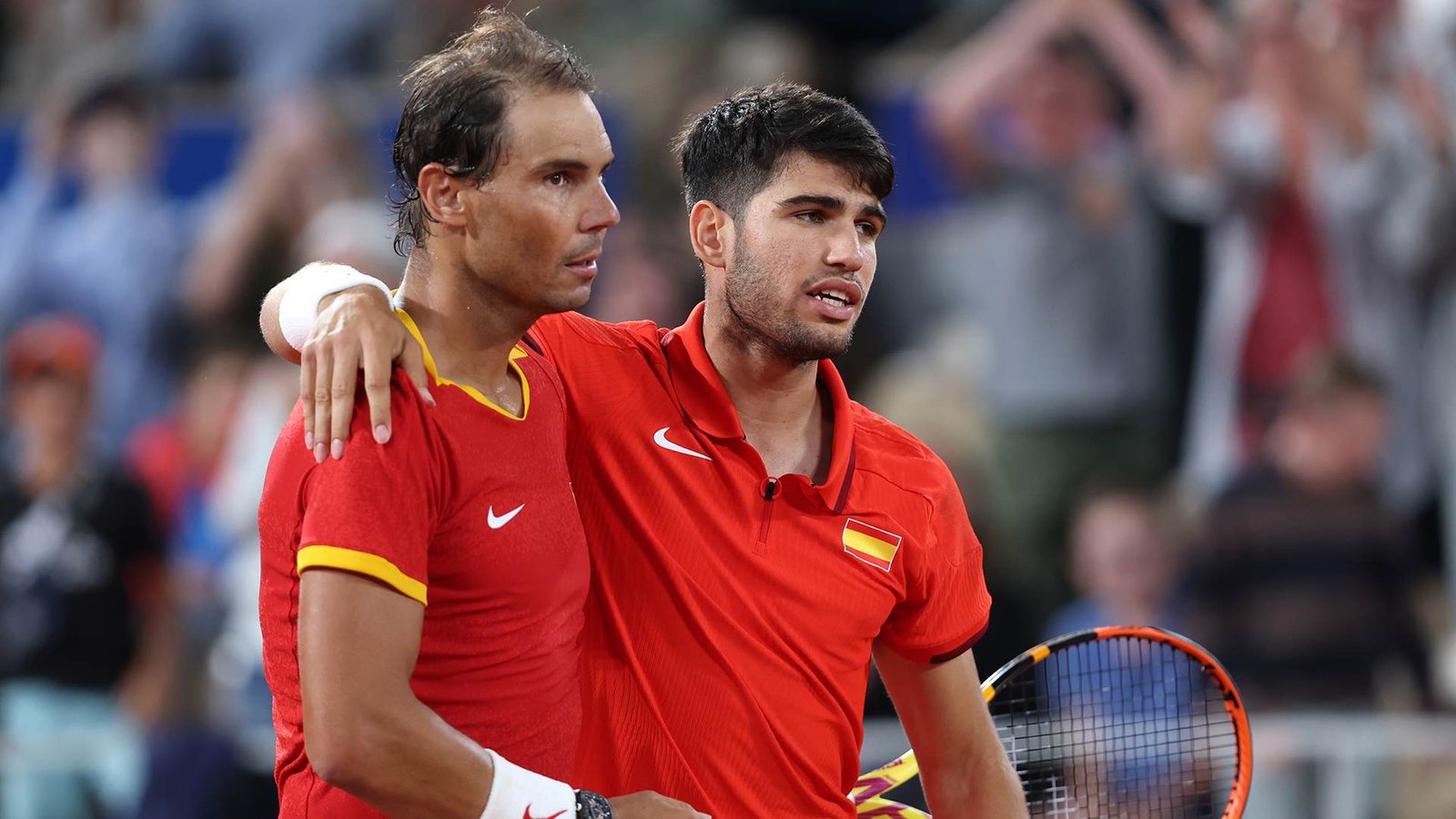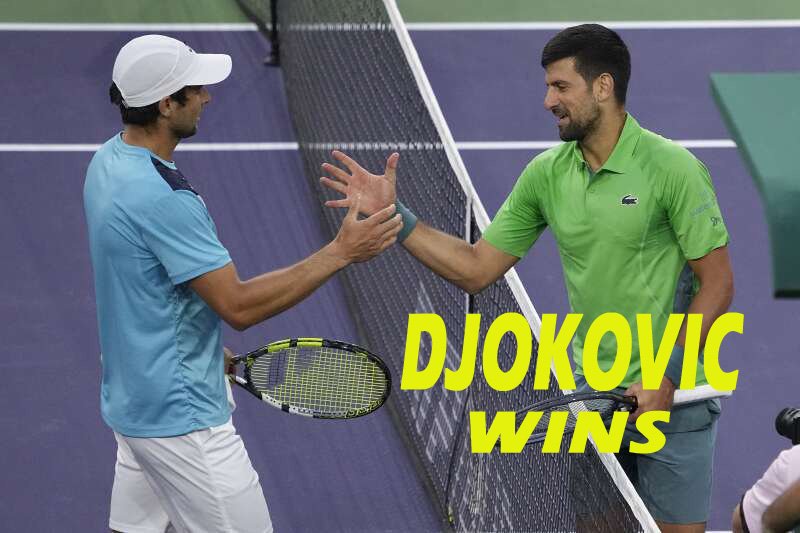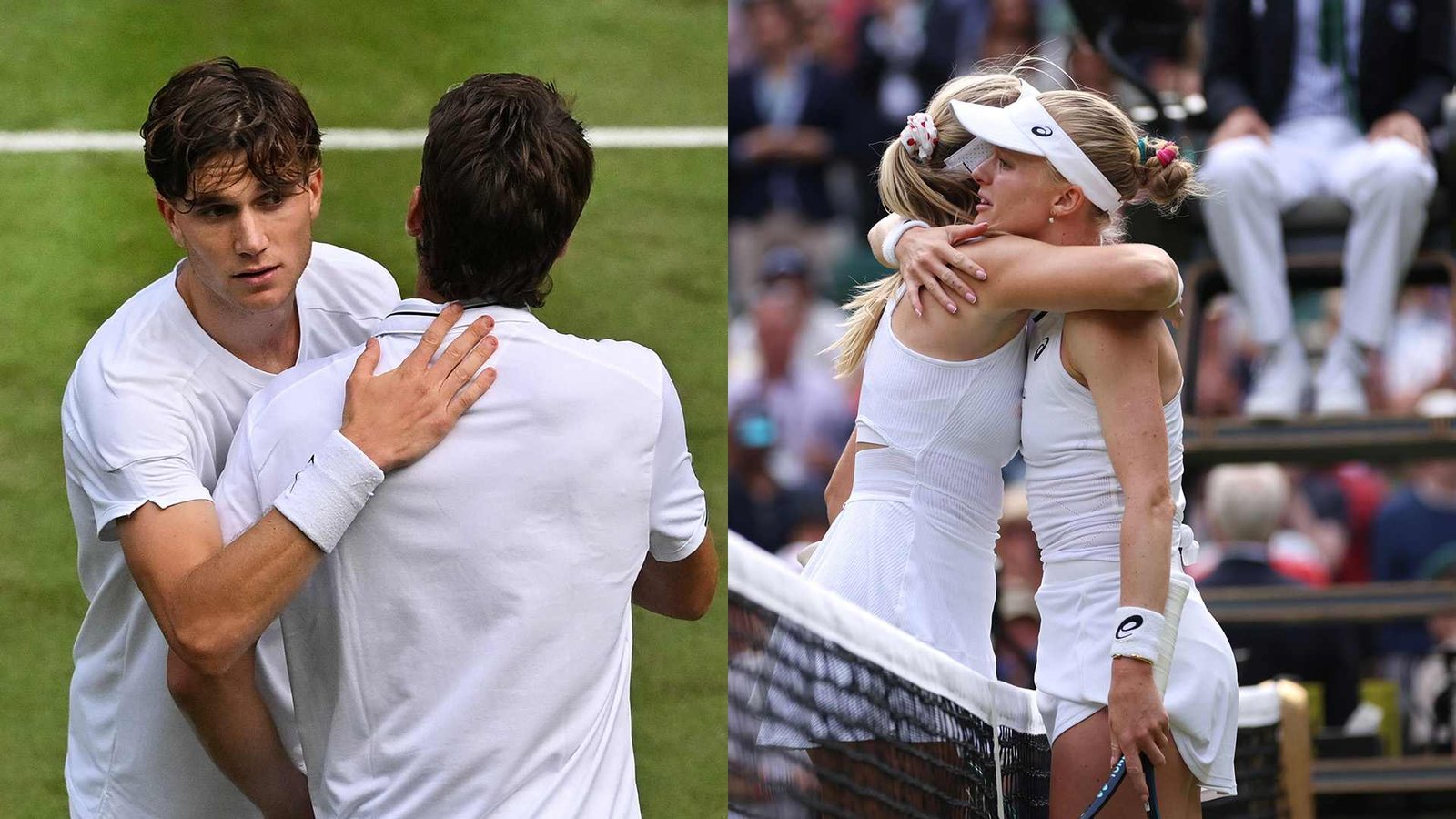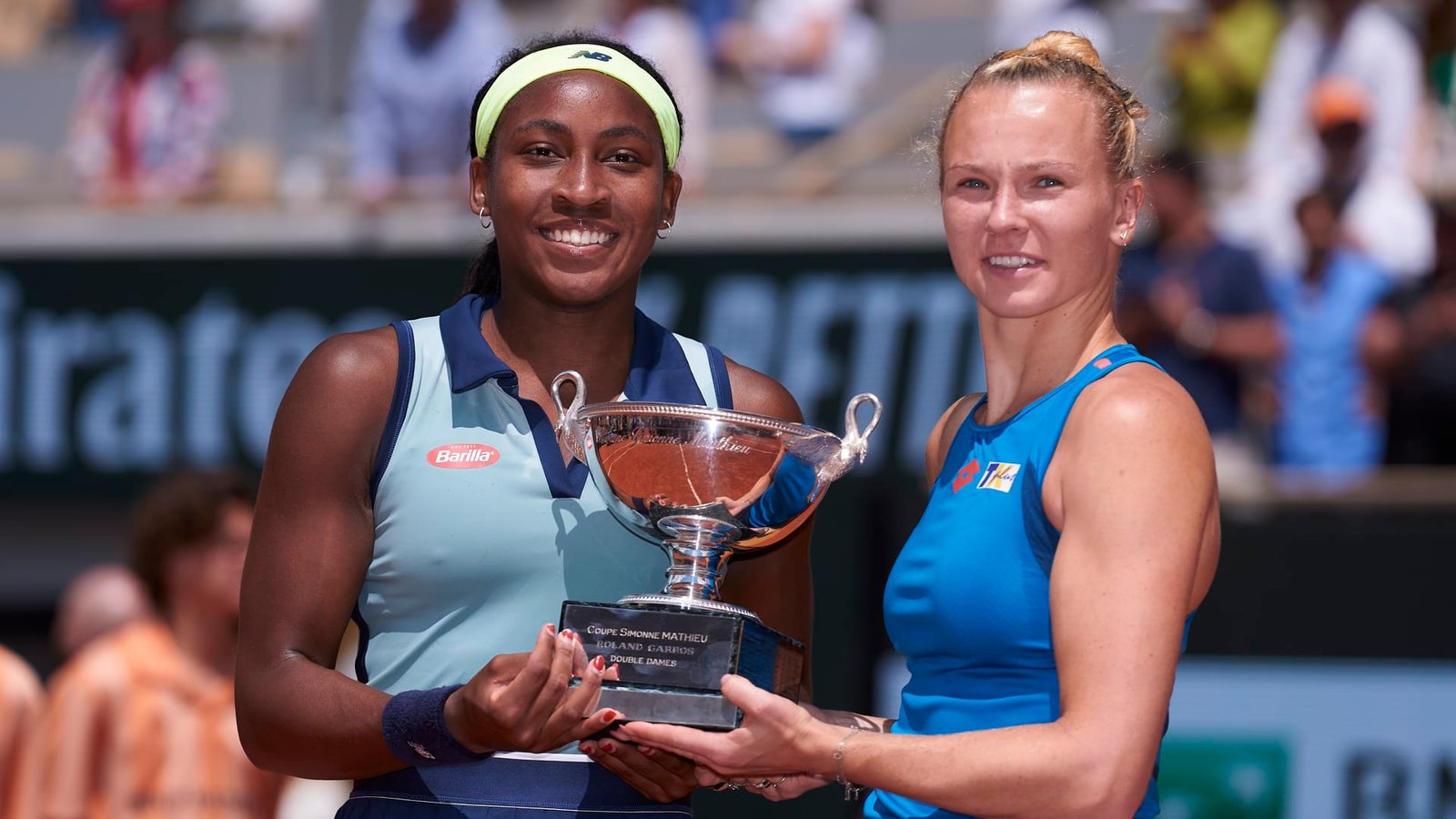The Unrivaled Rivalry of Rafael Nadal and Novak Djokovic in Rome: Tennis Updates 2024
The rivalry between Rafael Nadal and Novak Djokovic has always held a special place in the tennis world, especially in Rome’s prestigious courts.
From their early battles to their recent clashes, their matches in the Foro Italico have been nothing short of legendary, inspiring fans and experts alike.
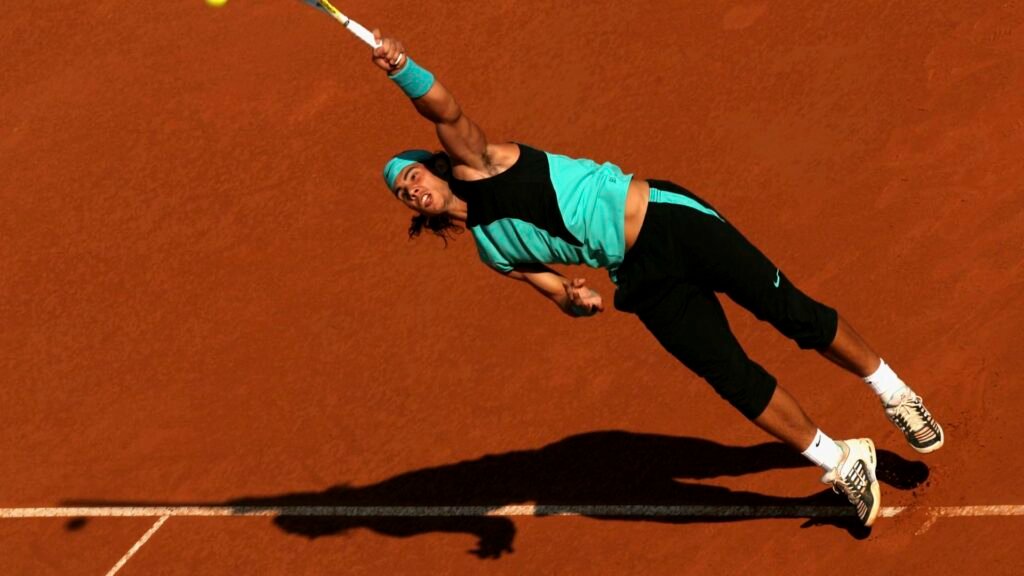
The first of Rafael Nadal and Novak Djokovic‘s nine meetings took place in Rome in 2007. When the 19-year-old Serb and the 20-year-old Spaniard entered the dilapidated, boxy, wooden Campo Centrale, I was there, ready and waiting, in the press seats.
This was a quarterfinal, a round that the media typically doesn’t think is essential to watch in person. However, for this one, the section’s seats were full. Long before the first ball was hit, even seasoned players like the 78-year-old Bud Collins were firmly seated in their chairs. One of the reasons I traveled to Rome that year was to witness a rematch of the thrilling 2006 final between Rafael Nadal and Roger Federer. But by the spring of 2007, Nadal-Djokovic was feeling almost as dominant.
The future of tennis appeared to be in front of us. With good reason, Nadal had already been dubbed the King of Clay; on the surface, he was nearing the end of an 81-match winning streak for men. However, Djokovic was “coming up fast in the rearview mirror,” as Rafa would later remark. In Miami two months prior, he had defeated Rafael Nadal in single elimination. He would make it to his first major final at the US Open later that summer.
However, he wasn’t quite prepared for Rafa on dirt. Nadal prevailed 6-2, 6-3, but as with previous of their meetings with lopsided results, the scores could not fully capture the captivating and occasionally absurd athleticism and shot-making on show. The most distinct image I have of the afternoon is watching some of those seasoned professional reporters in front of me go around in their seats, staring in shock, at a forehand winner from Rafael Nadal or a full-stretch get by Novak Djokovic.
“Very, very nice match,” Rafa exclaimed in the aftermath.
He followed that relief with a dose of realism, as he so often does.
Thus, Djokovic is an extremely talented player.
When I spoke with them both in Rome that year, I was impressed by how certain they both were about their positions and their futures. Even so, Djokovic expressed his expectation to become “the next No. 1 player.” Did that imply that he believed he would arrive ahead of Rafa, who at the time was ranked second behind Federer? In any case, Djokovic’s remarks fueled their burgeoning rivalry and stoked the fervent fan bases that had already developed around them.
Despite our expectations, both men and their competition managed to surpass them all. As evenly as feasible, they have split their 59 matches—30 for Djokovic and 29 for Nadal. In 2007, I was aware that they were full-time residents, but I doubt I could have predicted that Nadal would win ten titles and Djokovic six, and that they would still be playing there in the distant and futuristic year of 2024. Carlos Alcaraz and Jannik Sinner will still need to compete in these events in 2041 in order to match that.
But everything has to end, including Rafa-Nole. Last week, 37-year-old Rafael Nadal bid adieu to Madrid, and this week he will do so in Rome. Even Djokovic, the top seed, has started to experience some unanticipated but unavoidable career turbulence at the age of 36.
They appeared to have an epic in every port as the Spaniard and the Serb engaged in legendary matches throughout the world. But I felt that their rivalry in Rome had a unique quality. These games were seen as early indicators of what would transpire in Paris as they came to a close during the protracted and intense build-up to Roland Garros.
Rome not only provided the dramatic action of the match, but also created a sense of excitement about greater things to come. Djokovic was the hunter who was progressively narrowing the distance, and Nadal was the hunted. The dynamic remained lively throughout.
Also Read: Novak Djokovic and Rohan Bopanna: The Oldest World No. 1s Making History

When the two finally met in Paris, Nadal had usually pulled away from the group, which included Djokovic. But Djokovic was frequently more competitive, and things were less settled in Rome. Although Nadal leads their head-to-head match there 6-3, the outcomes fluctuated based on who was winning their battle at the moment. There was plenty of the circus-like athleticism and shot-making that only they two could produce in their straight-set matches in Rome.
A few games and situations stand out
Nadal and Djokovic surpassed themselves in a four-hour semifinal in Madrid in 2009 after competing in finals in Monte Carlo and Rome. However, their opening set in Rome, which ended in a tiebreaker, was an exact, even dilution of their basic push-and-pull strategy. I still see the disillusionment in Djokovic’s eyes when he snapped. Still far, but so close.
Djokovic caught up by 2011. He had recently silenced the Spanish audience in Madrid by defeating Rafa, and he was on a 48-match winning streak. Rafa was supposed to make things right in Rome, but Djokovic was just too brilliant. He won 6-4, 6-4, and it was as clinical as it gets. If Federer hadn’t broken his run in the quarterfinals, could he have defeated Rafa in Paris? The question remains intriguing.
Djokovic defeated Rafael Nadal in the Rome final in 2014 after playing yet another outstanding match. This time, he capitalized on Rafa’s strongest blow in the opening set and stepped up his game to win the final two sets, 6-3 and 6-3. However, Nadal triumphed against him once more in a four-set Roland Garros final a few weeks later.
While Djokovic was enjoying success in 2016 and headed toward the Djoker Slam, Rafael Nadal was struggling to recover from a more than a year-long slump that even affected his clay-court performance. They met in the quarterfinals, Rafa seeded just sixth, but their match was one of their most exciting battles. In my opinion, Djokovic’s victory (7-5, 7-6 (4)) is among the best 5 of their 59 matches. Every time Nadal gave it his all to prevail on clay, Djokovic had the answer.
Following the match, a positive Rafael Nadal referred to it as a “beautiful match” and stated that he was both “lucky and unlucky at the same time” to be playing with Djokovic. Even though he had lost, Djokovic had forced him to reach a level that was nearly as high as possible. Rafa would place first in the world in 2017. Nadal had been pressuring Djokovic to improve in Rome for years. Djokovic had now paid it forward.
The most recent—and probably last—meeting between Nadal and Djokovic in Rome took place in 2021. In another thrilling three-set match that lasted almost three hours, Nadal prevailed. Djokovic defeated four players who were at least ten years his junior—members of the group the ATP was referring to as the “Next Gen”—en route to the championship final. After the match, Djokovic grinned at Nadal and declared, “It’s obvious that Roger, Rafa, and I have reinvented the Next Gen.” THE NEXT GENERATION IS US!
It was difficult to dispute with him. Rafa and Nole remained the benchmarks of men’s tennis over twenty years after their historic match in Rome that sent those writers reeling. Like on any other court, they have challenged, tested, and motivated one another at the Foro Italico. They have developed everlasting tennis in their matches in the everlasting City—unlike anything that has ever been made before or will ever be produced again.

